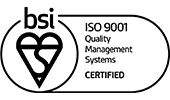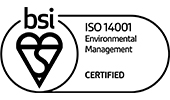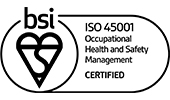We know that the IoT will be huge, but what is it & how will it impact the workplace?
The concept of the Internet of Things (IoT) has the potential to make some significant changes to the workplace, office interior design and the way that employees interact with the space they work in.
The definition, according to good old Wikipedia, is;
“The interconnection of uniquely identifiable embedded computing devices within the existing Internet infrastructure. Typically, IoT is expected to offer advanced connectivity of devices, systems, and services that goes beyond machine-to-machine communications (M2M) and covers a variety of protocols, domains, and applications.”
Essentially it’s the idea that anything and everything could potentially allow you to access and interact with the internet, from your watch to your car, from your fridge to your coffee shop.
The Internet has seen two waves of development; the fixed Internet of the ‘90s connected 1 billion users and the mobile internet of the 2000s connected another 2 billion. The third wave could connect as many as 28 billion things to the Internet by 2020.

There are a number of ways in which it differs from the ‘regular internet’;
The Internet of Sense
By attaching sensors to objects, data can be generated, recorded and analysed by things rather than people. How efficient are co-workers? How are meeting rooms utilised?
The Internet of Efficiency
Intelligence is added to manual processes, such as reducing energy usage on hot days, which is monitored and performed by things rather than people.
The Internet of Connectivity
Objects, from cars and watches to thermostats and more, can be connected to a network, shifting data storage away from off-site cloud computing and towards fog computing that’s stored on the network’s edge.
The Internet of Specialism
Technology becomes customised to specific industries, with objects and things unique to that sector modified to become a connected device.
The Internet of Everywhere
Connectivity and access to data is no longer confined to being able to access a PC, laptop or portable device. Your clothes, jewellery, white goods, modes of transport and the architecture of the places you live and work in are all part of the Internet of Things.
The implications are huge!
While the first two waves had the most impact on the technology sector, the Internet of Things will reach beyond tech companies and touch every industry.
By 2015, IDC claim that 1.3 billion workers will identify themselves as mobile workers. Another projection sees 1 trillion networked devices hooked up across the world by 2025.
The most obvious implementation in the workplace is the automation of heating systems and air conditioning or perhaps turning on the office coffee pot. But taken to an extreme, it could mean office furniture and accessories taking care of the more routine tasks in the office.
The emphasis in the Internet of Things is often placed on the fact that it empowers things, but it has the potential to empower people to manage their work more effectively. Could a device know you well enough that it pre-empts your plans for the day? Locking your office for you as you leave, pre-ordering and paying for your coffee at Starbucks, Feeding the directions to your next meeting into the sat-nav of your smart-car then, noting your location, realising that you’re going to be late so contacting the client and changing the meeting.
Wearable technology opens up plenty of opportunities for collaboration with the State of Workplace Productivity Report finding that three out of five respondents would be willing to try wearable devices if it helped them do their job better. Millennials in particular were open to the idea, with 66 percent of them expressing an interest.

Goldman Sachs explored the concept through a report, infographic and video, looking at the economic and societal reasons behind it, as well as the potential security risks involved.
We’re probably a long way from the more sci-fi extremes of video-conferencing robots, but the superconnected office is already here and the Internet of Things will undoubtedly have an impact on the approach to office design for future workers.
Over the next 5 to 10 years an office fit-out will increasingly need to adapt the office space to reflect the advances in technology that the Internet of Things will inevitably bring. Companies that recognize this will be the ones who attract and retain the best staff in the connected world that we live and work in.
Written by Alasdair McIntyre, Sales & Marketing Director








